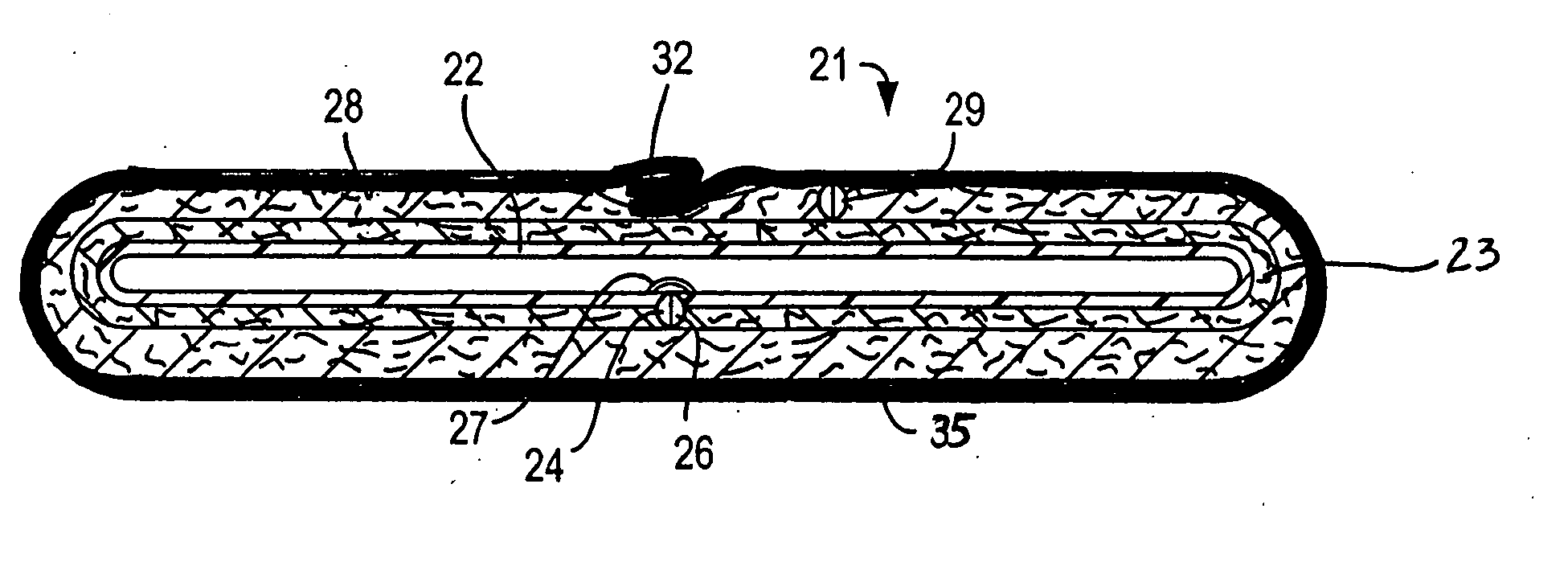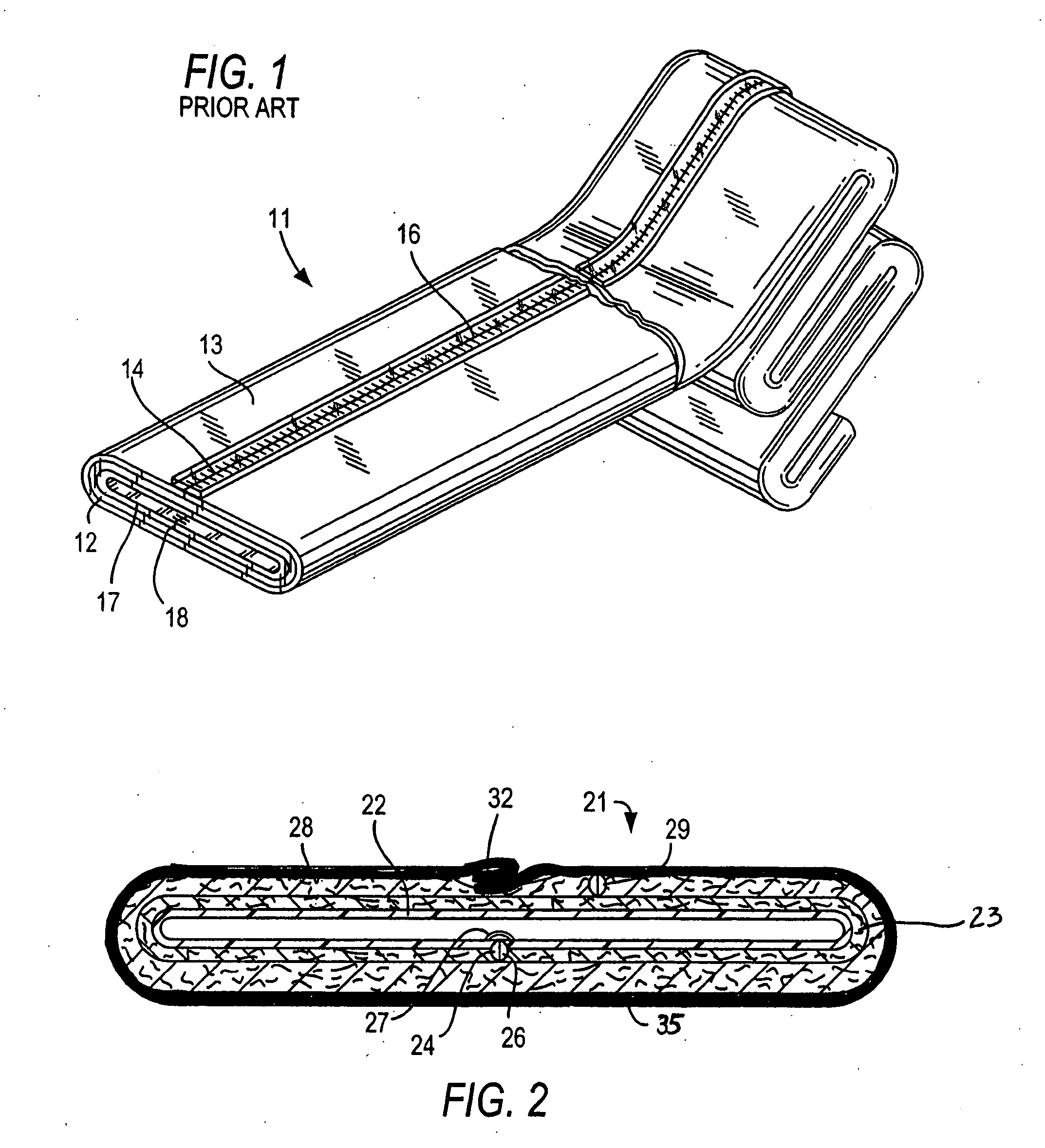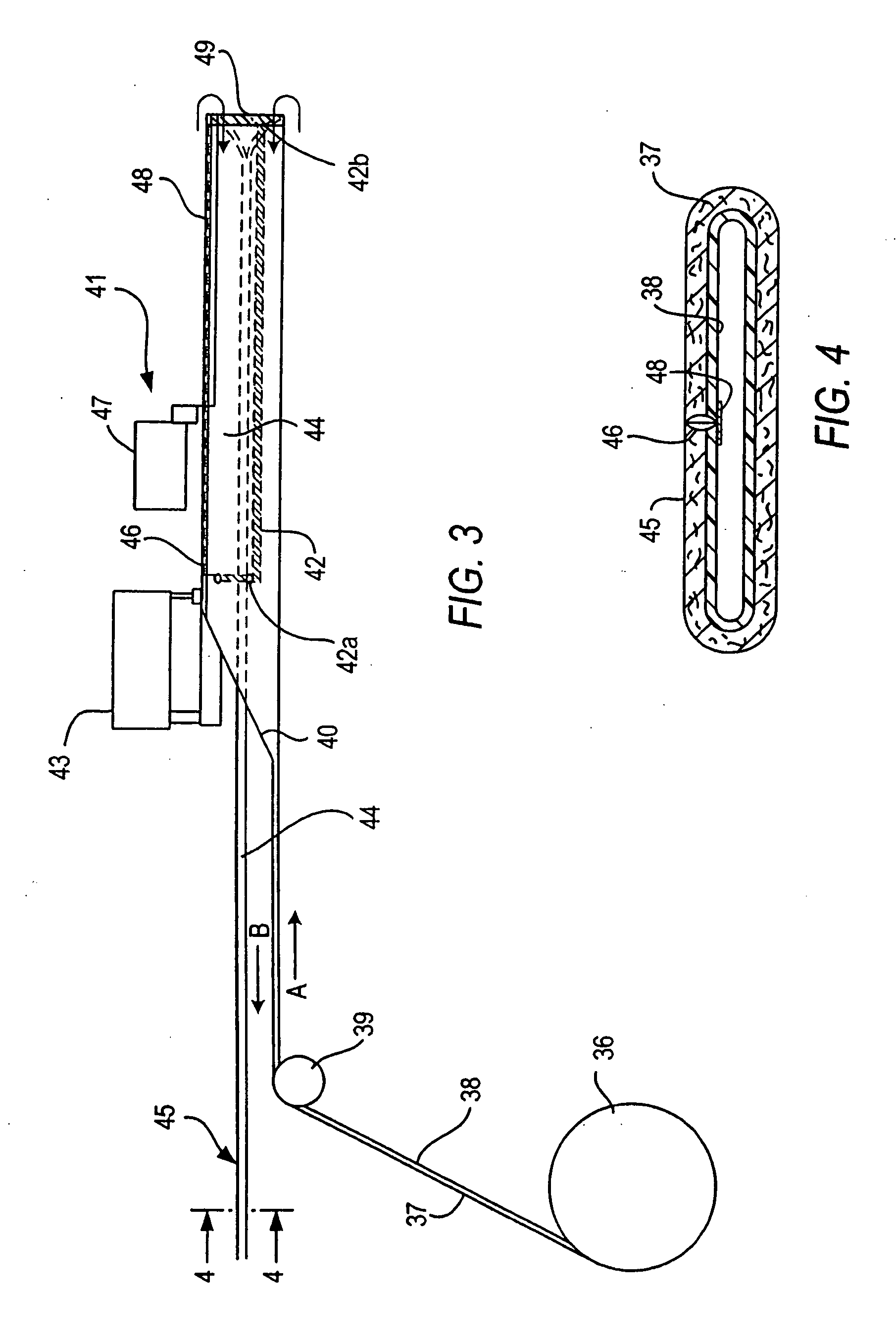Longitudinally reinforced cured in place liner and reinforced coating
a technology of longitudinal reinforcement and longitudinal reinforcement, which is applied in the direction of pipe elements, mechanical equipment, other domestic objects, etc., can solve the problems of deterioration of the pipe itself, leakage in the existing conduit, and the deterioration of the conduit itsel
- Summary
- Abstract
- Description
- Claims
- Application Information
AI Technical Summary
Benefits of technology
Problems solved by technology
Method used
Image
Examples
Embodiment Construction
[0038] A resin impregnated cured in place liner prepared in accordance with the invention has a longitudinal reinforcing coated scrim layer as the outer impermeable layer. When prepared with an integral internal impermeable layer, it can be installed by the pull-in-and-inflate method and be inflated and cured with a heated fluid without the use of an inflation bladder. A liner with inner impermeable longitudinal reinforcing coated scrim layer may be prepared in continuous lengths. It may be impregnated as it is assembled in view of the increased effort necessary to impregnate a flattened liner having a resin absorbent material between an inner and an outer coating using conventional vacuum impregnation technology.
[0039]FIG. 1 illustrates a flexible cured in place liner 11 of the type generally in use today and well known in the art. Liner 11 is formed from at least one layer of a flexible resin impregnable material, such as a felt layer 12 having an outer impermeable polymer film l...
PUM
| Property | Measurement | Unit |
|---|---|---|
| diameter | aaaaa | aaaaa |
| weight | aaaaa | aaaaa |
| length | aaaaa | aaaaa |
Abstract
Description
Claims
Application Information
 Login to View More
Login to View More - R&D
- Intellectual Property
- Life Sciences
- Materials
- Tech Scout
- Unparalleled Data Quality
- Higher Quality Content
- 60% Fewer Hallucinations
Browse by: Latest US Patents, China's latest patents, Technical Efficacy Thesaurus, Application Domain, Technology Topic, Popular Technical Reports.
© 2025 PatSnap. All rights reserved.Legal|Privacy policy|Modern Slavery Act Transparency Statement|Sitemap|About US| Contact US: help@patsnap.com



